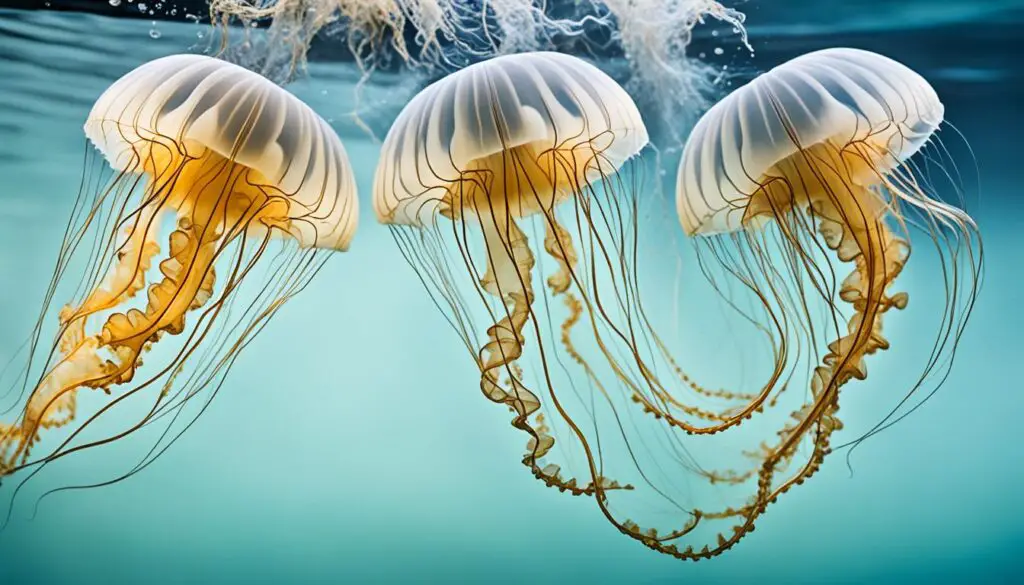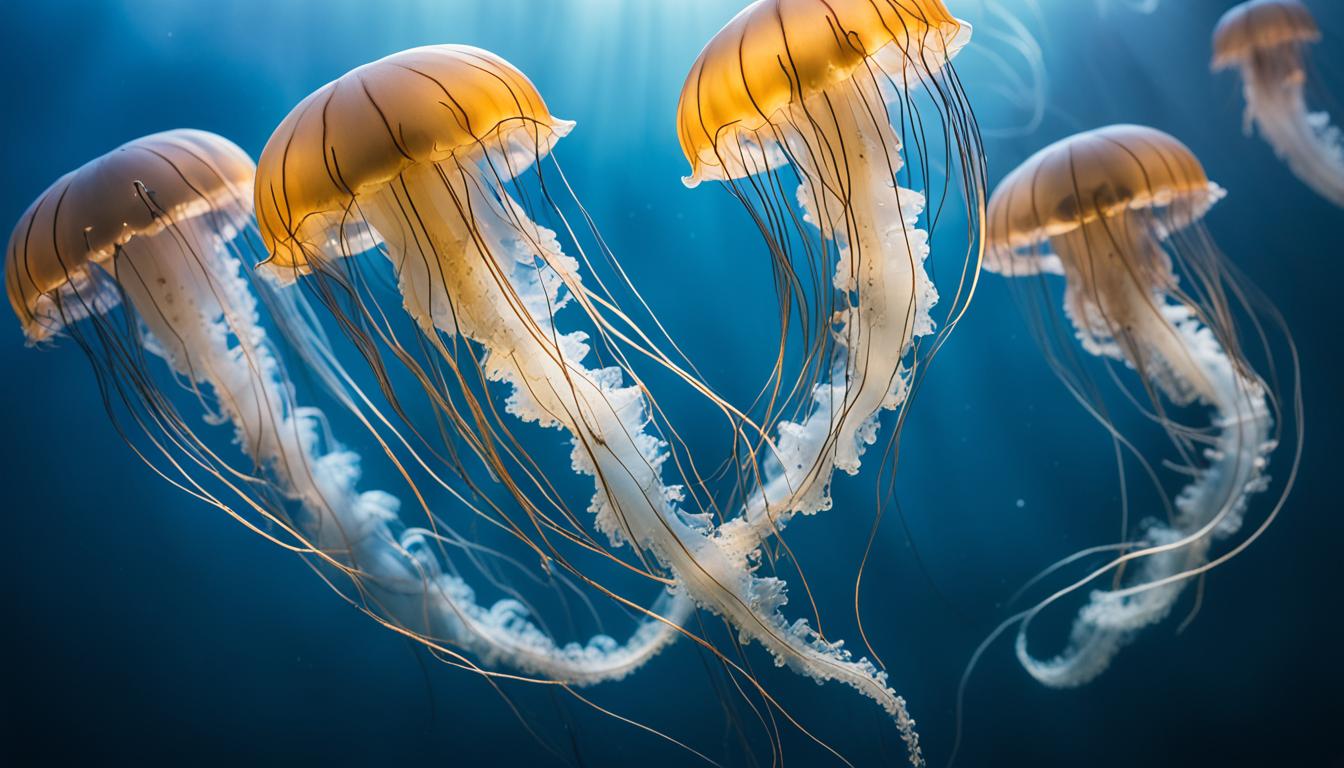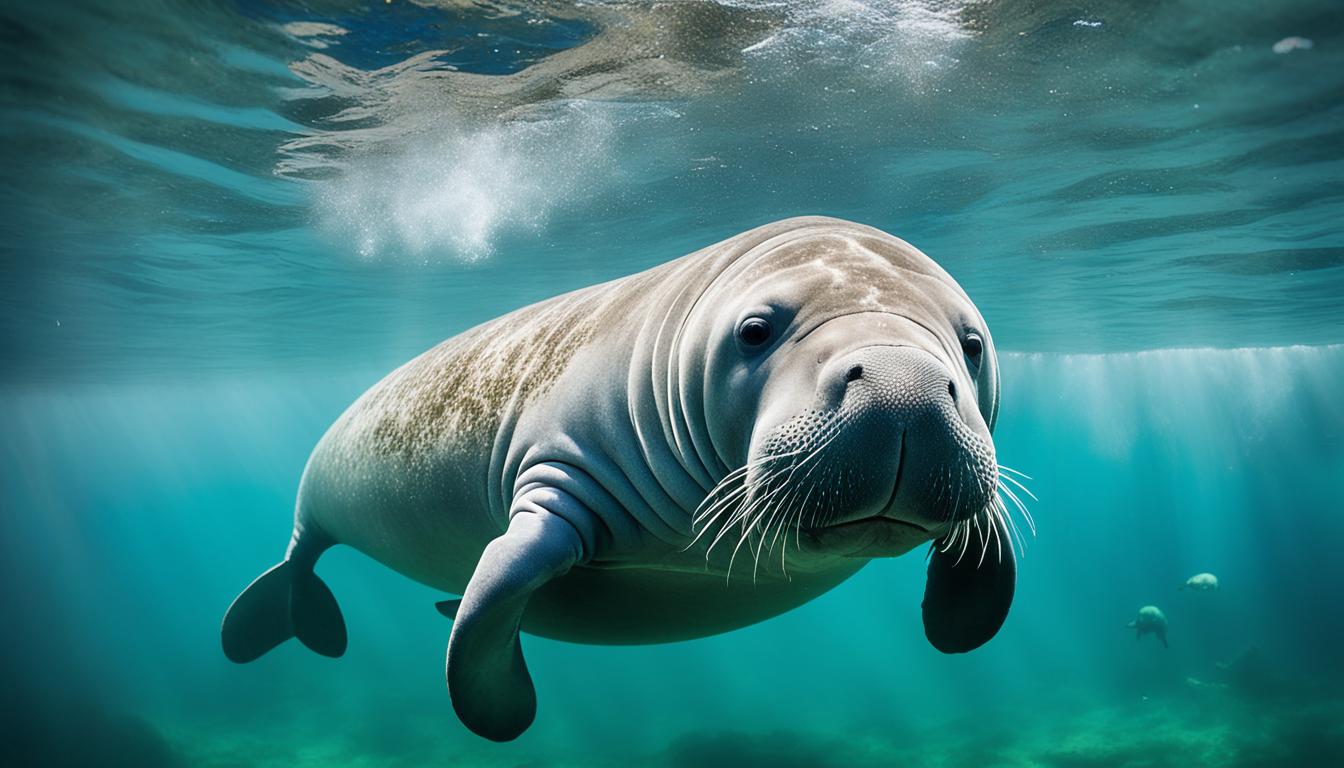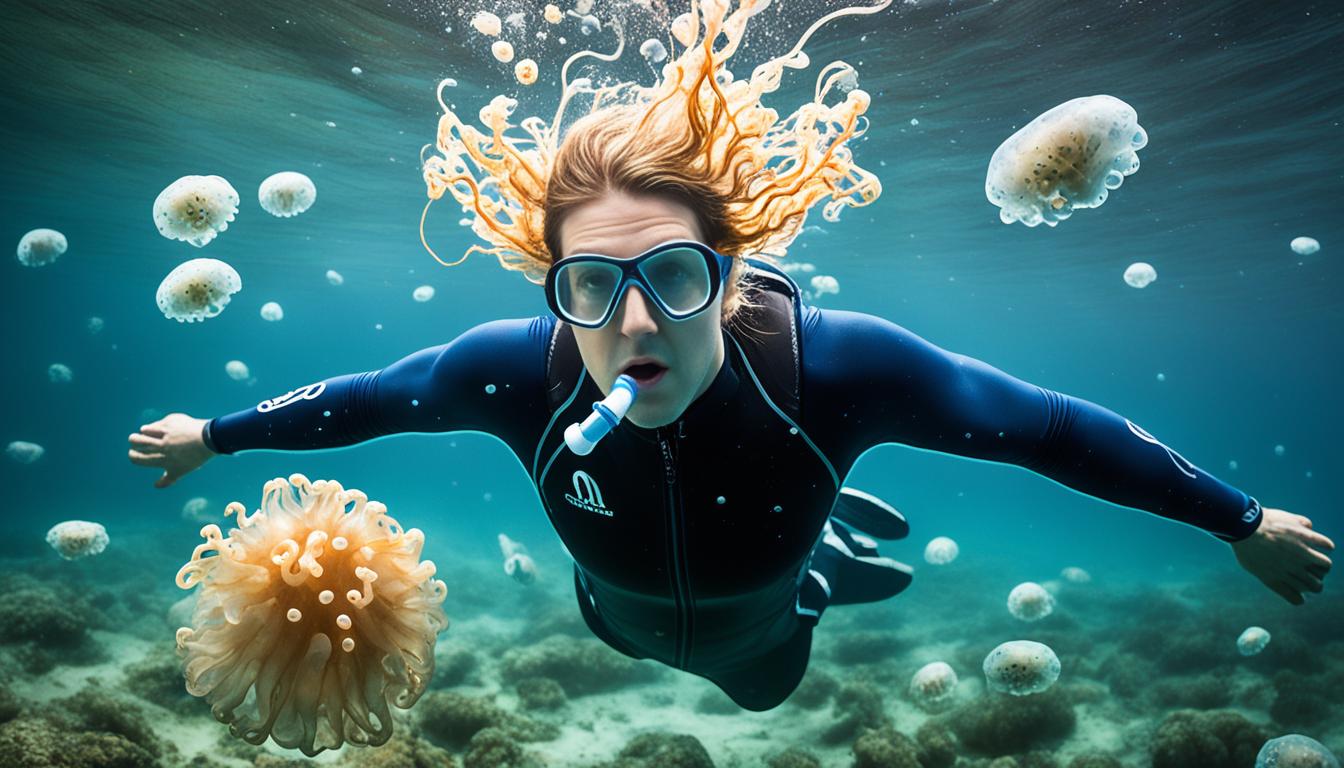Jellyfish are often seen as simple sea creatures, but they are actually amazing swimmers. They glide through the ocean in a way that scientists and fans find fascinating. You might ask, how do jellyfish move? They use a special way of swimming that lets them move easily through the water.
Jellyfish have a design that helps them use little energy while swimming. This makes them some of the best swimmers in the ocean. Experts like Dr. Gemmell have studied how they do it. They show us how jellyfish can live in the ocean’s complex layers.
The Fascinating Biology of Jellyfish
Jellyfish are amazing creatures with a unique structure that fascinates scientists and sea lovers. Their anatomy helps us understand how they’ve thrived in different ocean environments. The bell is key to their movement.
Understanding Jellyfish Anatomy
Jellyfish have a soft body called the medusa with an umbrella-shaped bell and long tentacles. This design helps them stay stable and flexible in the water. They have special cells called cnidocytes with stingers for defense and catching food. Their simple design shows how well it works for ocean life.
The Role of the Bell in Locomotion
The jellyfish bell is the main part that moves them. By moving the bell, they push water out to move forward. This way, they use little energy to get around. Their way of moving has made them successful in the ocean for over 550 million years.
| Feature | Description |
|---|---|
| Bell Shape | Umbrella-like structure that facilitates movement |
| Tentacles | Long appendages used for capturing prey |
| Cnidocytes | Stinging cells for defense and hunting |
| Locomotion Method | Contraction and relaxation of the bell to expel water |
| Energy Efficiency | Minimal energy expenditure during movement |
Hydrodynamics of Jellyfish Movement
Jellyfish move in the ocean using complex
hydrodynamics and propulsion methods. By understanding these
mechanics, we see how they navigate their underwater world.
Mechanics Behind Jellyfish Propulsion
Jellyfish move by contracting and expanding their bell-shaped bodies. This action creates a strong push, letting them glide forward. When they contract, they push water out, and when they expand, they pull water back in. This cycle uses the water’s density to boost their movement.
Water Vortices and Their Importance
Jellyfish create water vortices that are key to their swimming. When they contract, they make small swirling currents. These currents help reduce resistance and add thrust. Studies show these vortices are not just side effects but key to speeding up their movement and saving energy.
| Aspect | Description |
|---|---|
| Contraction Phase | Water is expelled, creating forward thrust. |
| Expansion Phase | Water is drawn back in, preparing for the next push. |
| Water Vortices | Miniature swirling currents enhance propulsion and reduce drag. |
| Hydraulic Advantage | Efficient movement through dense seawater, conserving energy. |
How do jellyfish move?
Jellyfish move in two main steps: contraction and relaxation. These steps help them swim through the ocean. They use these movements to move efficiently through the water.
The Two Phases of Jellyfish Motion
In the contraction phase, jellyfish push water out of their bell. This makes them move forward, similar to a rocket. The water behind them helps them move quickly.
Then, in the relaxation or refill phase, they take in water to get bigger again. This gets them ready for the next contraction.
When they’re refilling, they use the water currents from before to keep moving. This way, they don’t lose speed. So, how do jellyfish swim? It’s all about the balance between pushing out and pulling in water. This makes them great at moving through the ocean.

| Jellyfish Movement Phase | Description | Significance |
|---|---|---|
| Contraction | Expulsion of water from the bell | Primary propulsion mechanism |
| Relaxation | Refilling with water | Maintains momentum with minimal energy |
Jellyfish Swimming Behavior
Jellyfish show off a wide range of swimming behaviors, each one unique to its kind. These behaviors are key to their survival in the ocean. Some jellyfish use ambush tactics to catch prey, showing their clever hunting skills. Learning about these behaviors helps us see how jellyfish live in their world.
Exploring Movement Patterns in Different Species
Each jellyfish species has its own way of swimming, shaped by where it lives and what it eats. Some main differences include:
- Oscillation Rates: Some jellyfish change how fast they pulse to move better in different waters.
- Vertical Movement: The moon jellyfish, for example, can go up and down on purpose, helping them find food.
- Drifting Strategies: Many jellyfish use ocean currents to move, showing how they’re adapted to their surroundings.
Comparison with Other Aquatic Creatures
When we look at how jellyfish swim compared to fish and cephalopods, their method is quite different. Jellyfish don’t swim like fish do with fins. Instead, they glide passively, which saves them energy but still lets them move well, especially in different ocean areas. Here’s how swimming compares across creatures:
| Creature | Swimming Technique | Energy Efficiency |
|---|---|---|
| Jellyfish | Passive gliding with bell contractions | High efficiency, low energy use |
| Fish | Active propulsion with fins | Moderate to high, depends on speed |
| Cephalopods | Jet propulsion through siphoning | Varies, generally high for sudden movements |
Jellyfish Propulsion Techniques
Jellyfish have amazing ways to move through the water. At the heart of their movement is the elastic tissue in their bodies. This tissue is key to their swimming skills. It lets them move easily without using a lot of energy.
Elastic Tissue Functionality
The elastic tissue in jellyfish helps them swim amazingly. When they contract their bell, the elastic tissue stores energy, like a rubber band. Then, when they relax, this energy pushes them forward. This way, they move efficiently and have adapted well to life in the water.
Utilizing Minimal Energy for Motion
Jellyfish are experts at moving with little energy. They use the water’s currents and their special body design to glide easily. This is very useful in tough environments where other animals might struggle. By studying how jellyfish move, we can learn how to make things that use less energy in the water.









